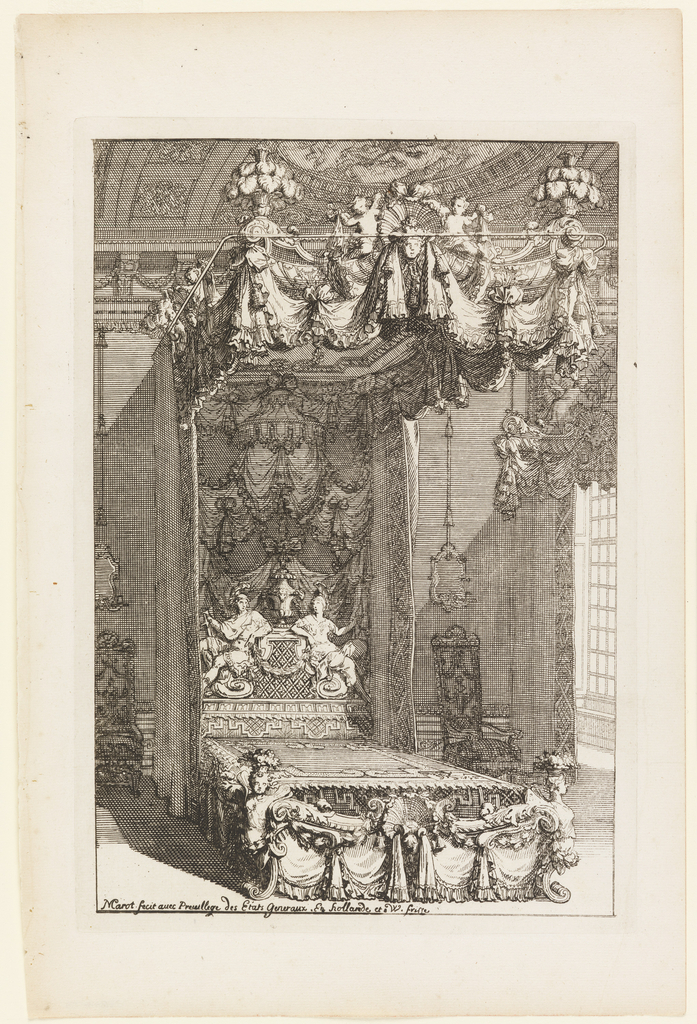An opulent bed, almost completely dominated by its hangings, pushes at the edges of the border in this etching by the French designer and architect, Daniel Marot. This design is for a state bed (lit d’apparat), a bed that was purely ceremonial rather than functional, and kept in royal palaces and aristocratic residences in the event of a visit from a monarch who would be greeted by the owner in the state bed. Marot, who emigrated to Holland after the 1685 revocation of the Edict of Nantes, is credited with bringing the French style to the Low Countries, where he worked for Prince William of Orange, and followed him as King William III to England where he continued to invoke the French decorative manner. In addition to designs for the crown, Marot also produced series of prints showcasing his designs for clocks, vases, mirrors, ceilings, carriages, and garden follies.
In this particular print, Marot applies heavy ornaments and ornate hangings, usually found on beds and boudoirs, to his fantastic design for a state bed. The canopy is completely overtaken by the drapery, braids and ribbons. At the center, two putti present a large classical mask, instead of a coat of arms. The bed skirt echoes the cresting of the tester. The headboard features an ornate design composed of two classical figures, likely Minerva as they are wearing a crested helmet and a sword, seated below a tent-like motif. Putti with baskets frame the foot of the bed. On either side of the state bed are high-back chairs and mirrors. To the right is a doorway with an equally elaborate canopy. Light streams in from unseen windows. Elements from this bed, such as the tent-motif on the headboard and the hangings of the canopy, are echoed in an ink drawing of a bed by Marot, currently conserved at the Biblioteca Comunale degli Intronati in Siena, Italy.[1]
This is one of several designs for state beds in Marot’s Second Livre d’Appartement. The state bed would have been one of the costliest items in state apartments due to the high price of the textiles. Although this bed does not appear to have been realized, there is a surviving bed in the style of Daniel Marot at the Melville House in Fife, which was originally made for George, 1st Earl of Melville in 1700. The Melville State bed still has its original hangings of Genoa velvet, Chinese silk damask linings, and silk trimmings.
However, Marot’s design can be understood as a fantasy composition rather than a blueprint for artisans. This etching thus offers a glimpse at a time when beds, alongside other items of interior furnishings, were integral aspects in courtly ceremony. While state beds in many royal palaces and country houses have recently been restored, few approach the ostentatious ambitions of this design.
[1] As Fig. 5 in Robert C. Smith, “Five Furniture Drawings in Siena,” in Furniture History, Vol. 3, (1967): pg. 1-15.
Cabelle Ahn is a graduate intern in the Department of Drawings, Prints and Graphic Design at the Cooper Hewitt, Smithsonian Design Museum. She received her MA in Art History from the Courtauld Institute of Art and is currently studying eighteenth century decorative arts at the Bard Graduate Center.
